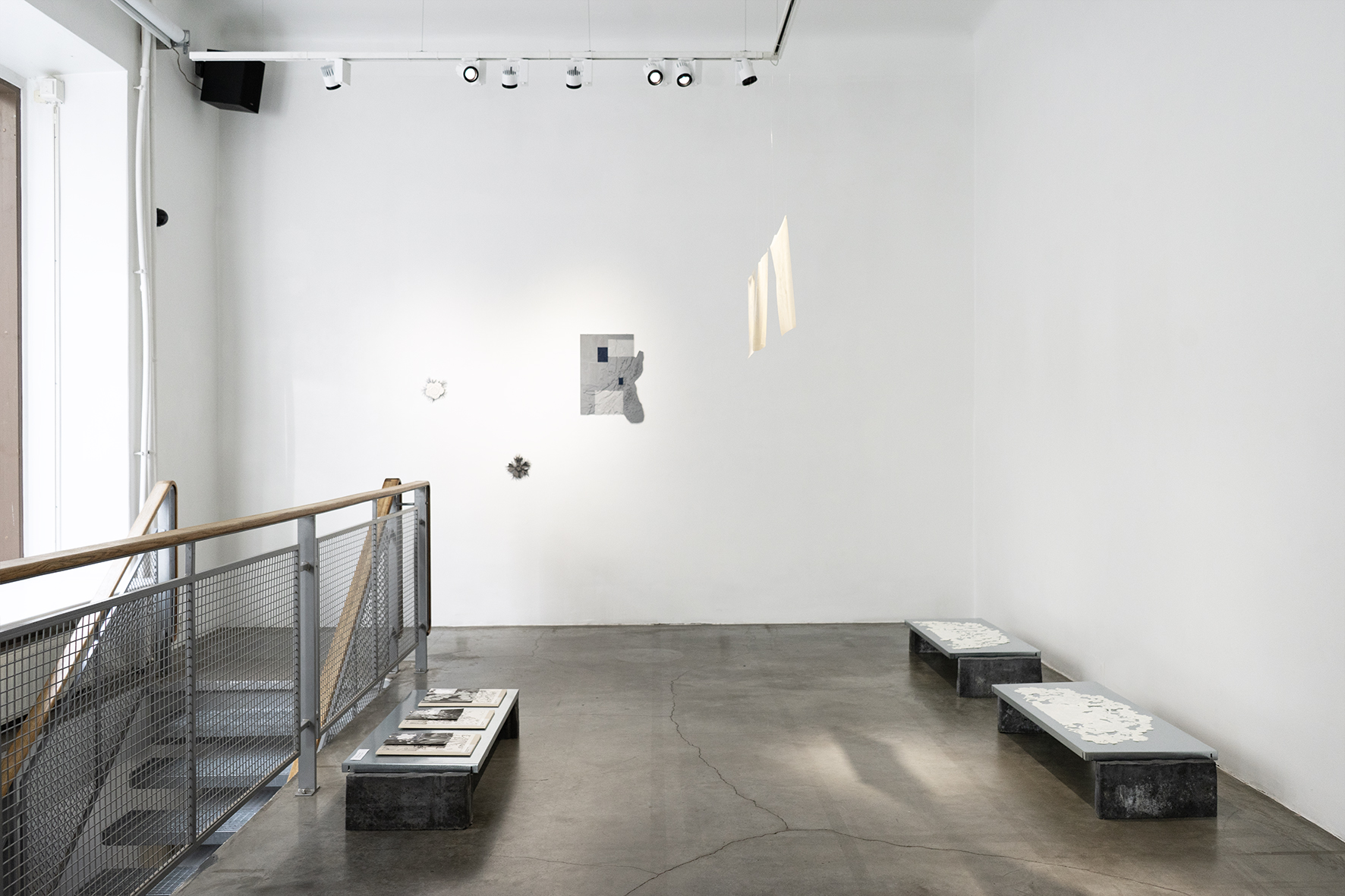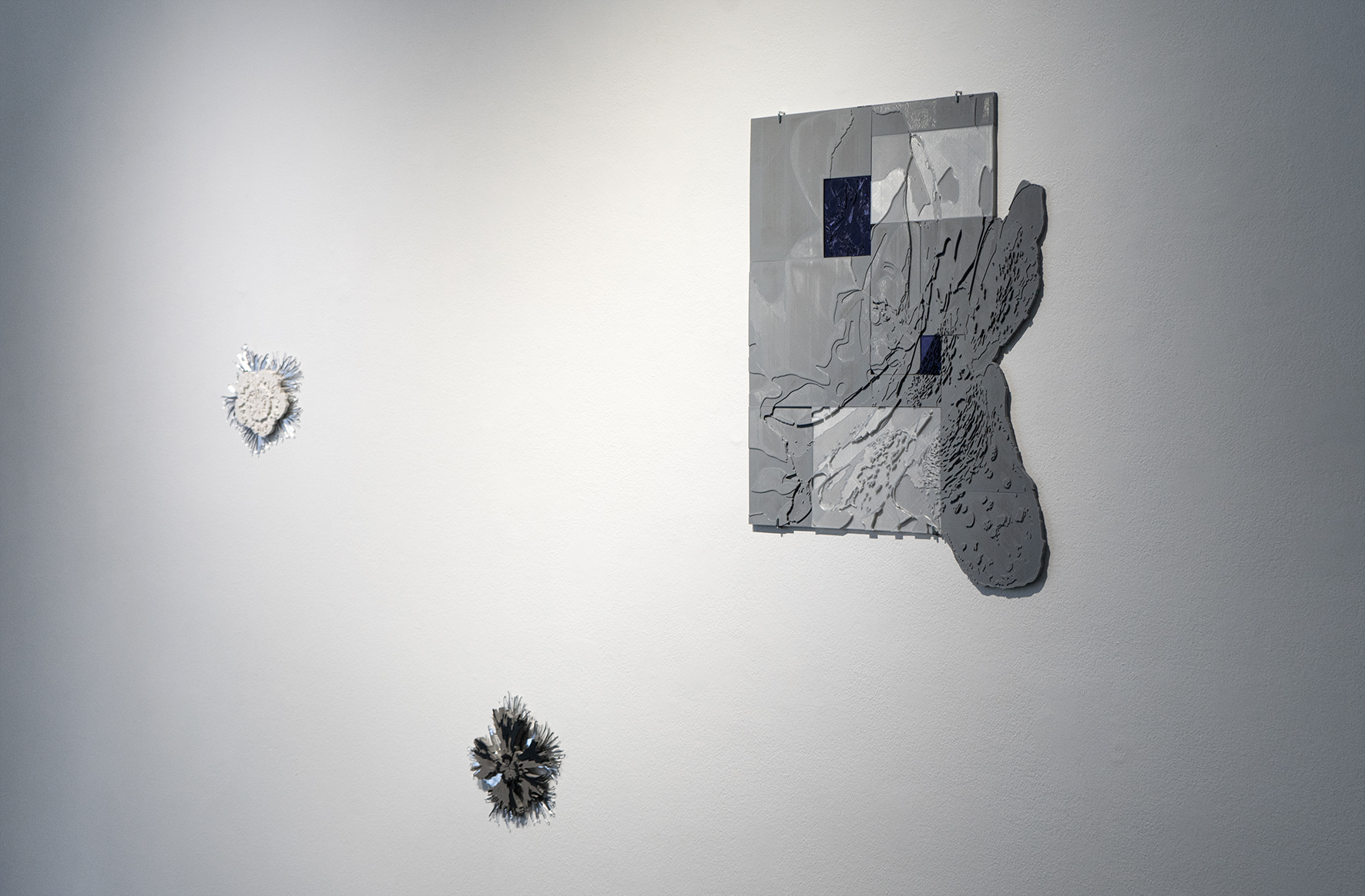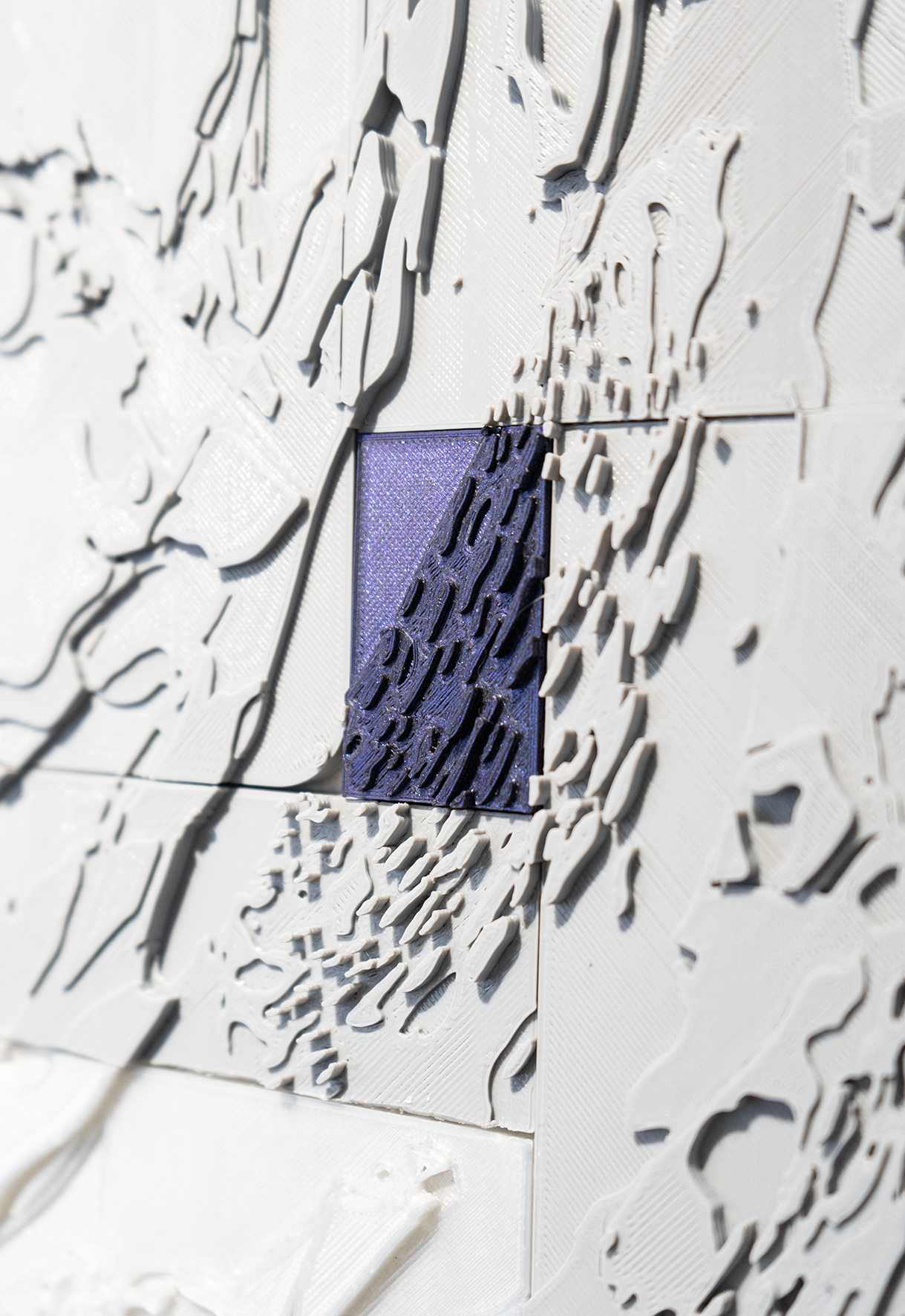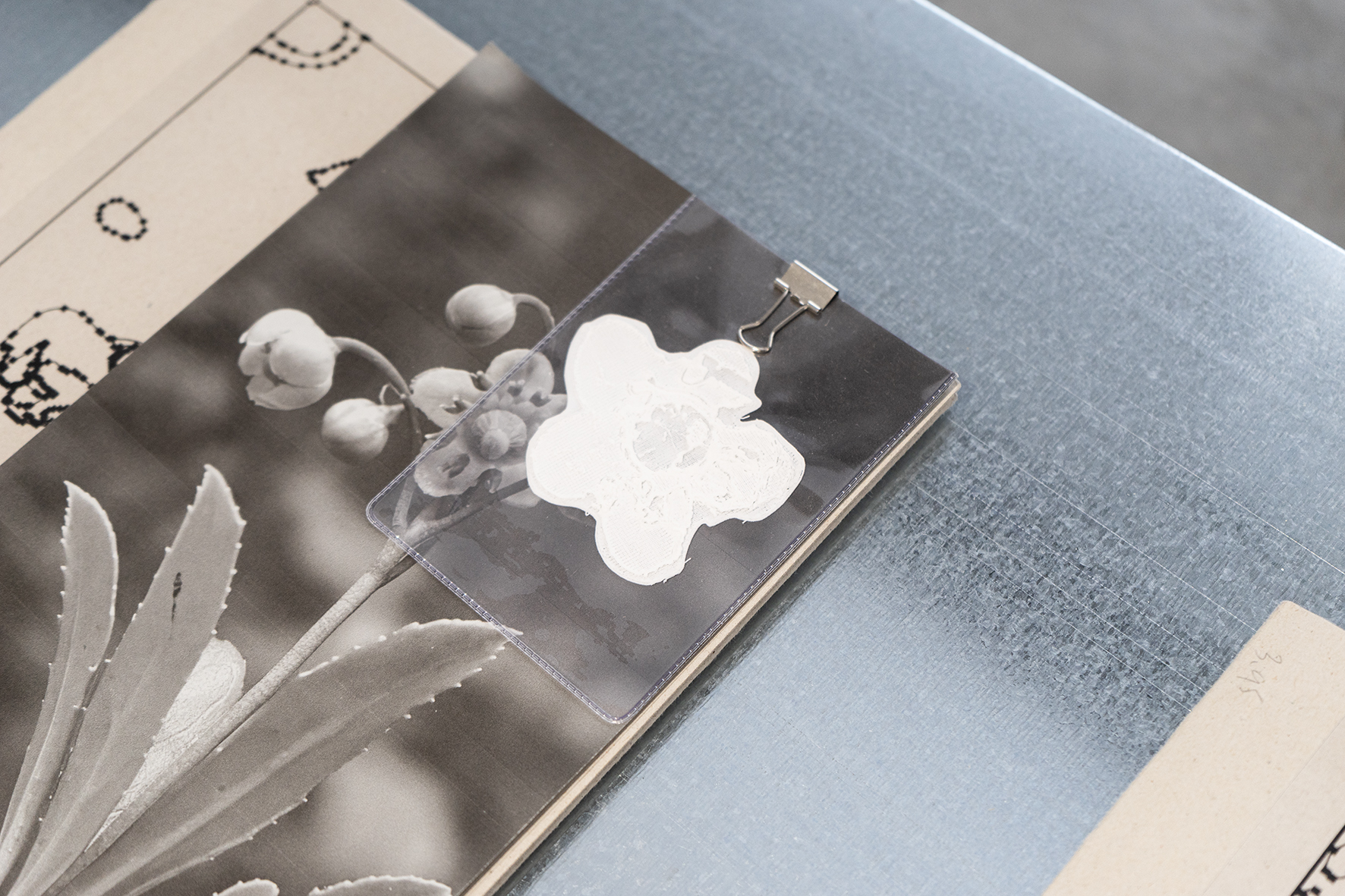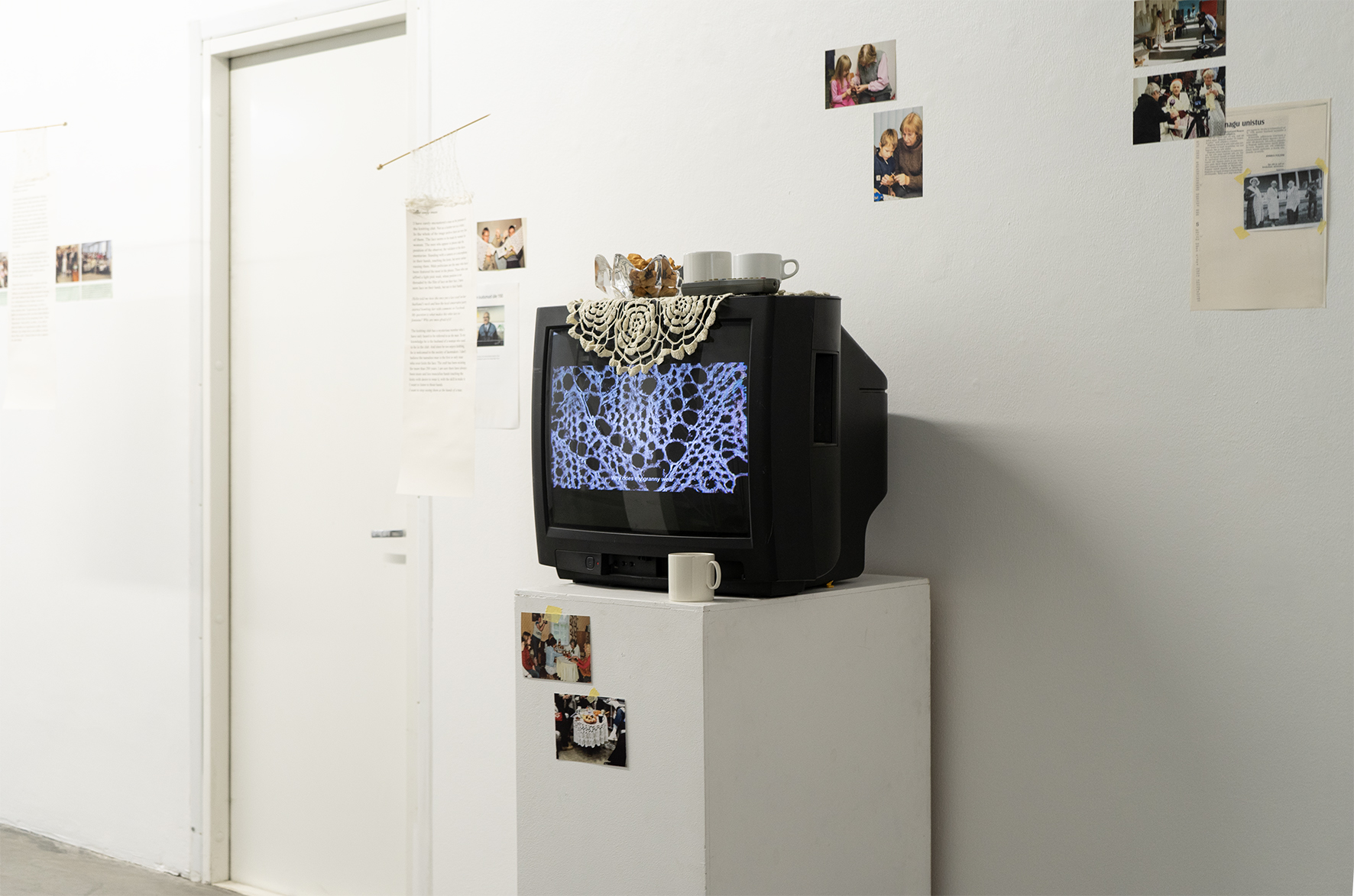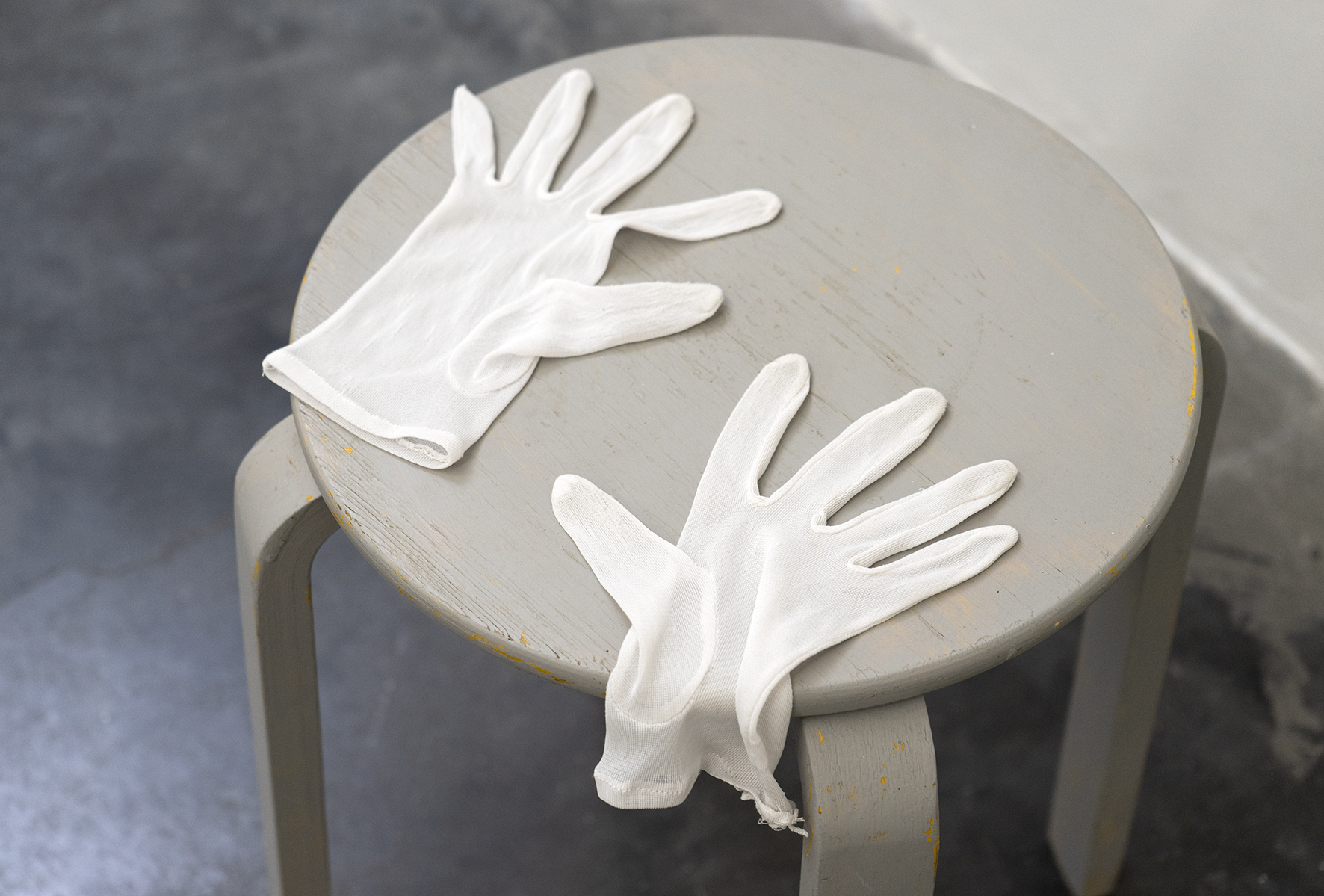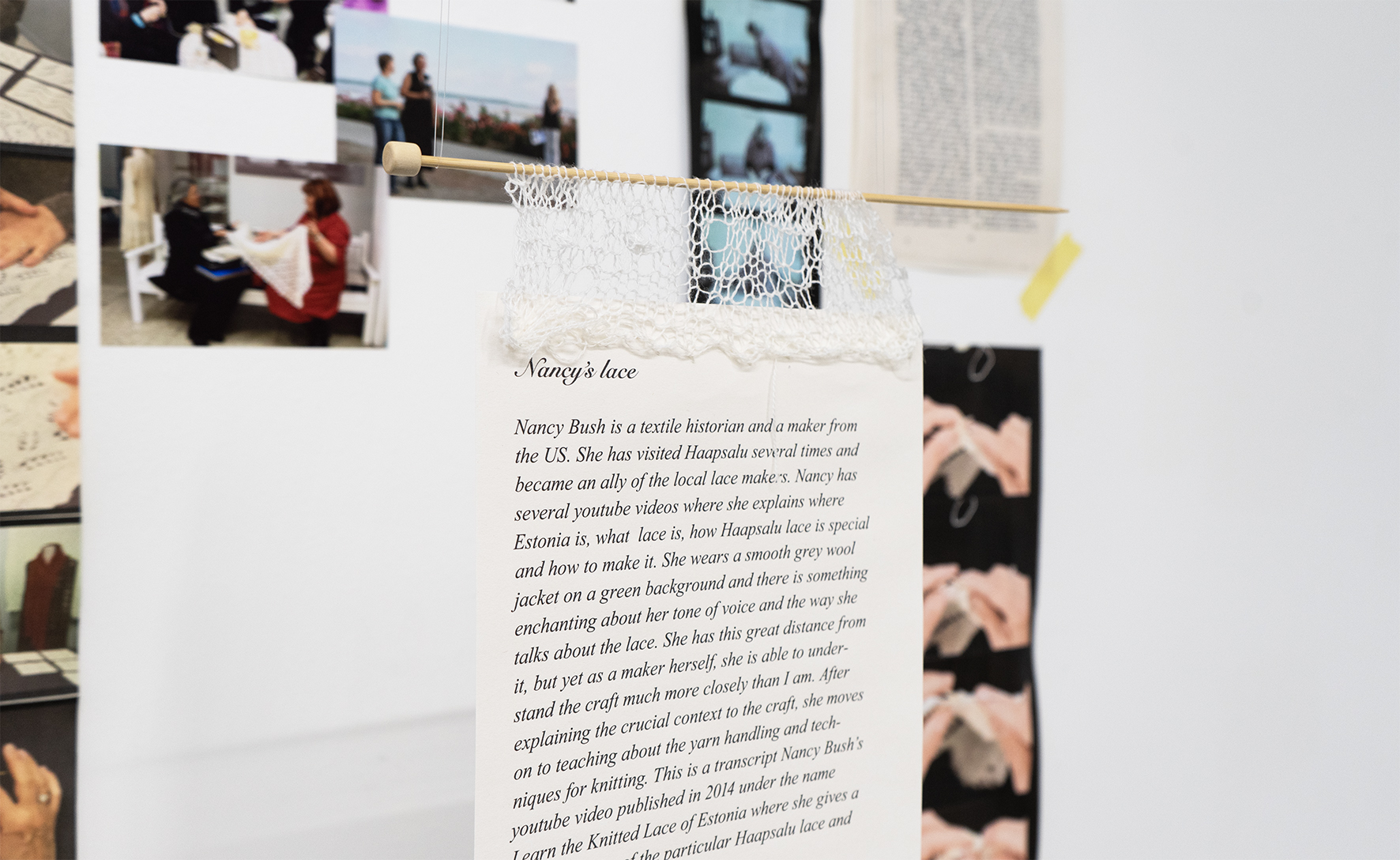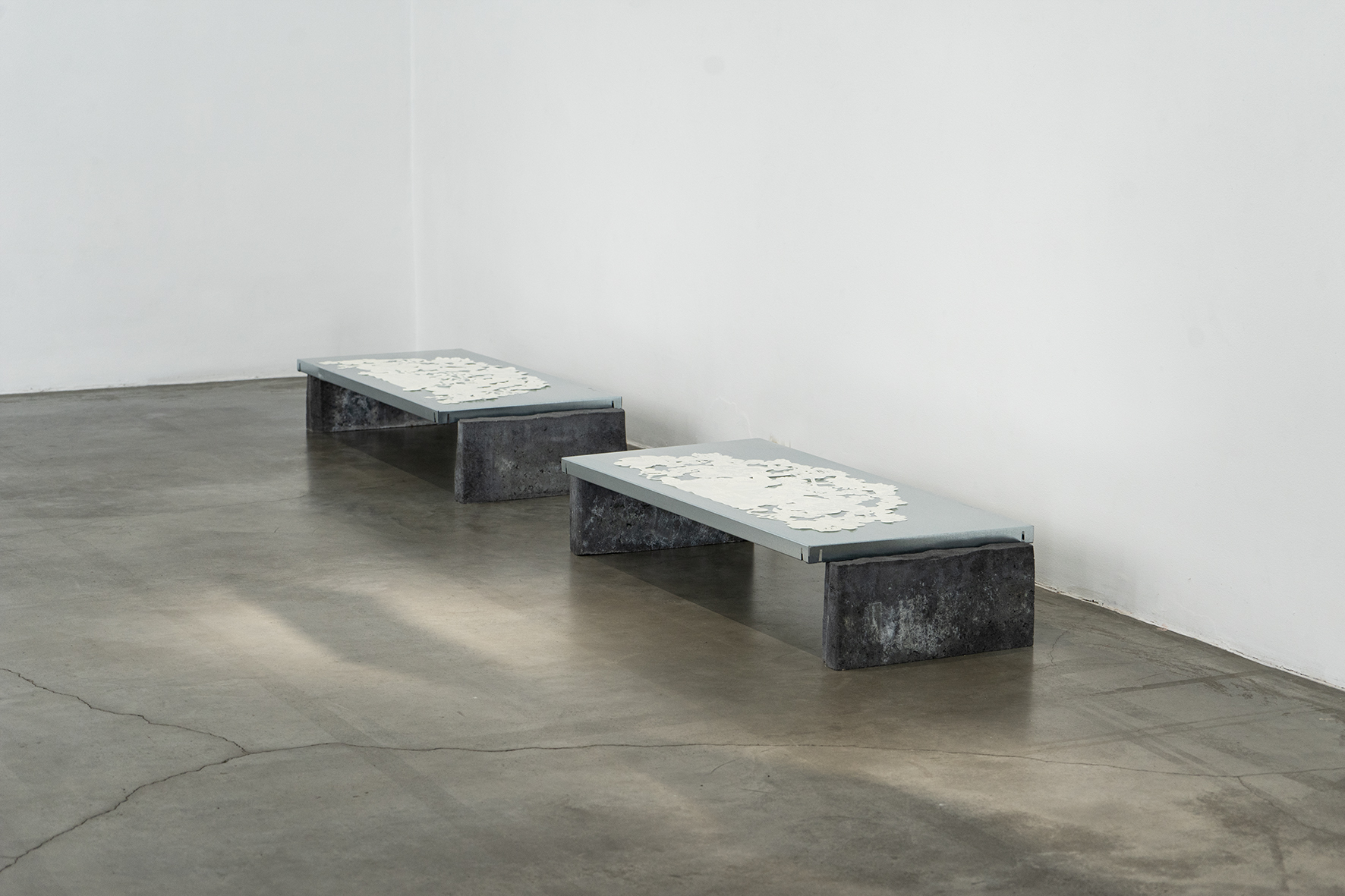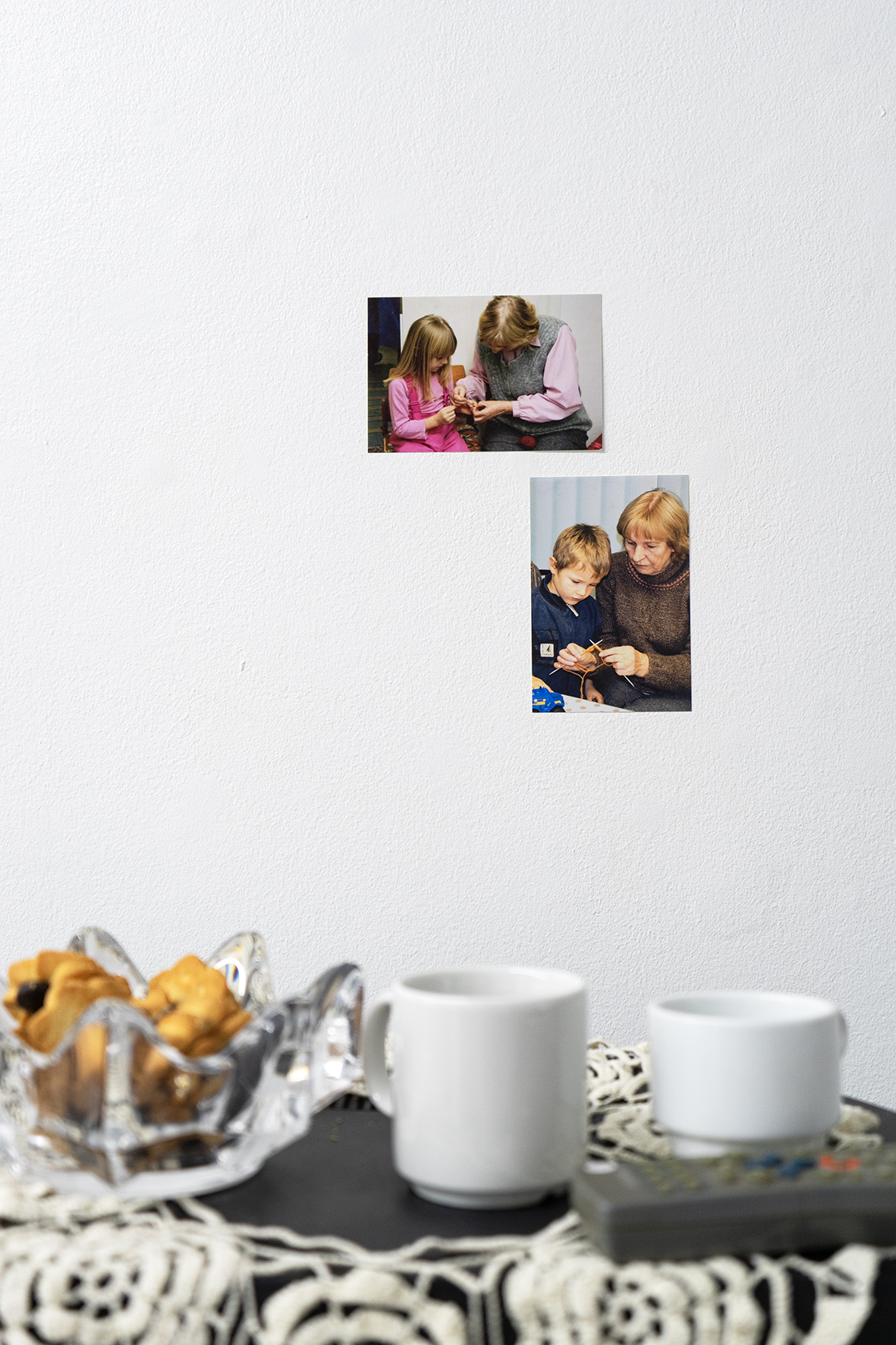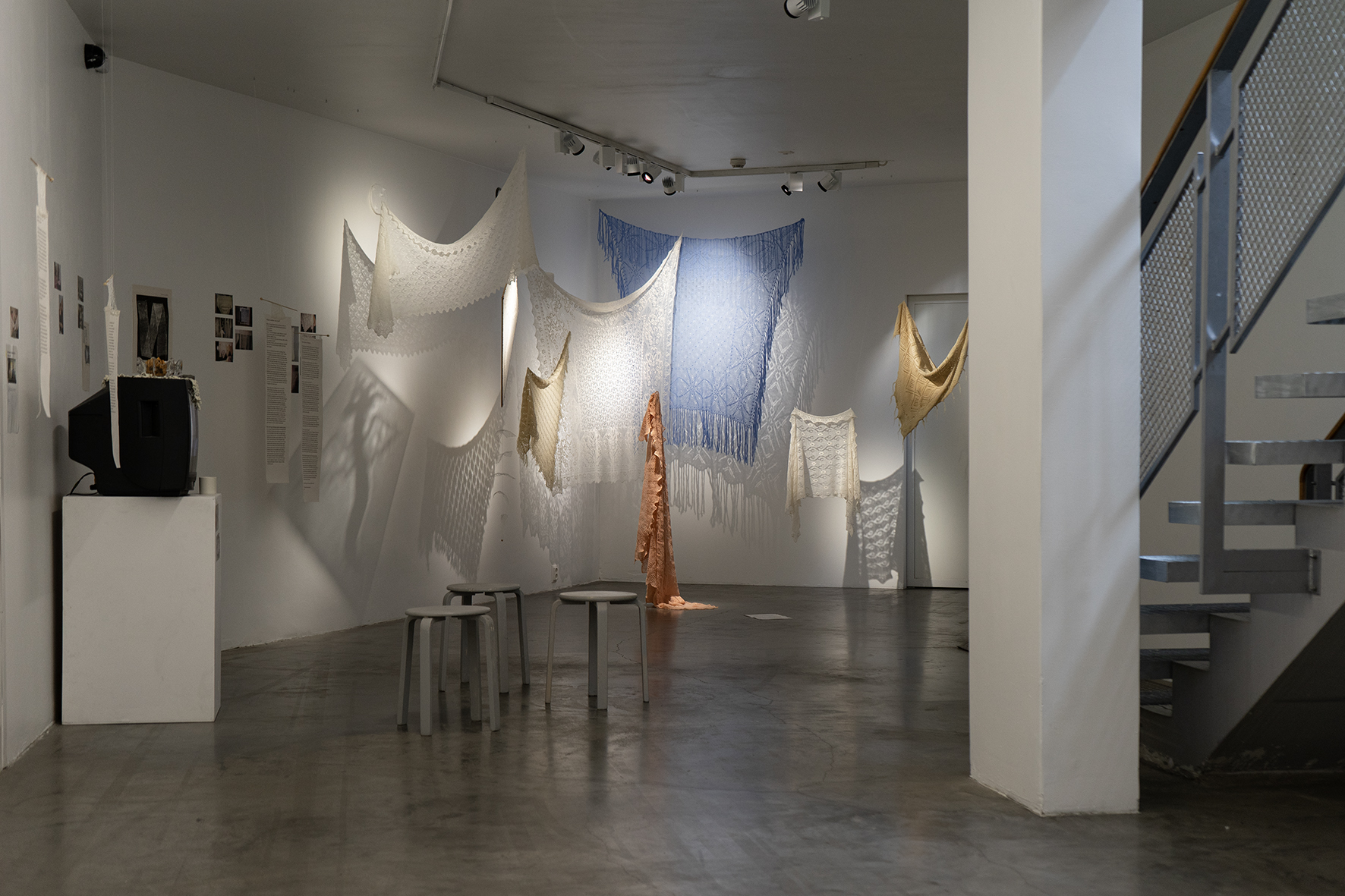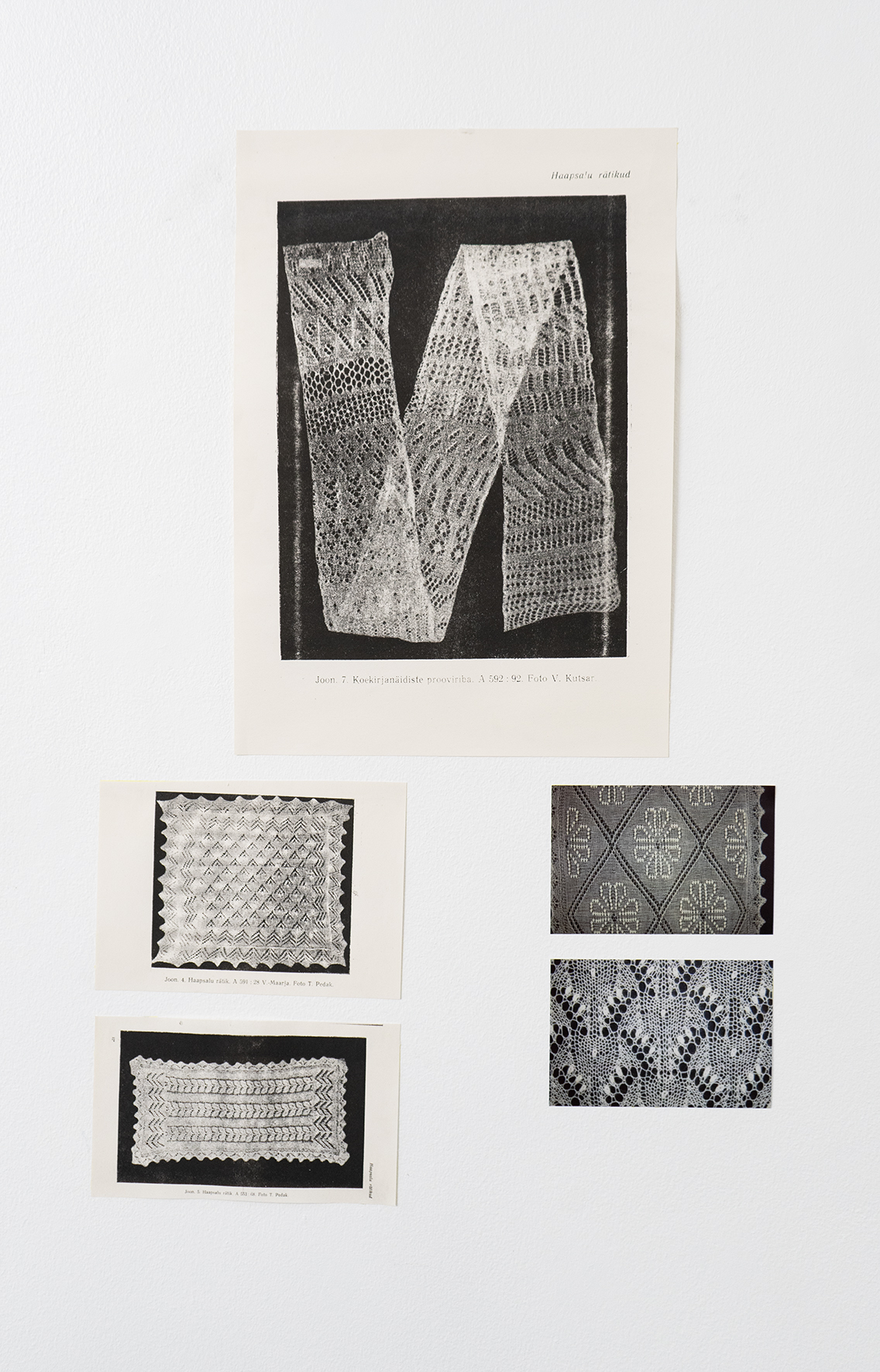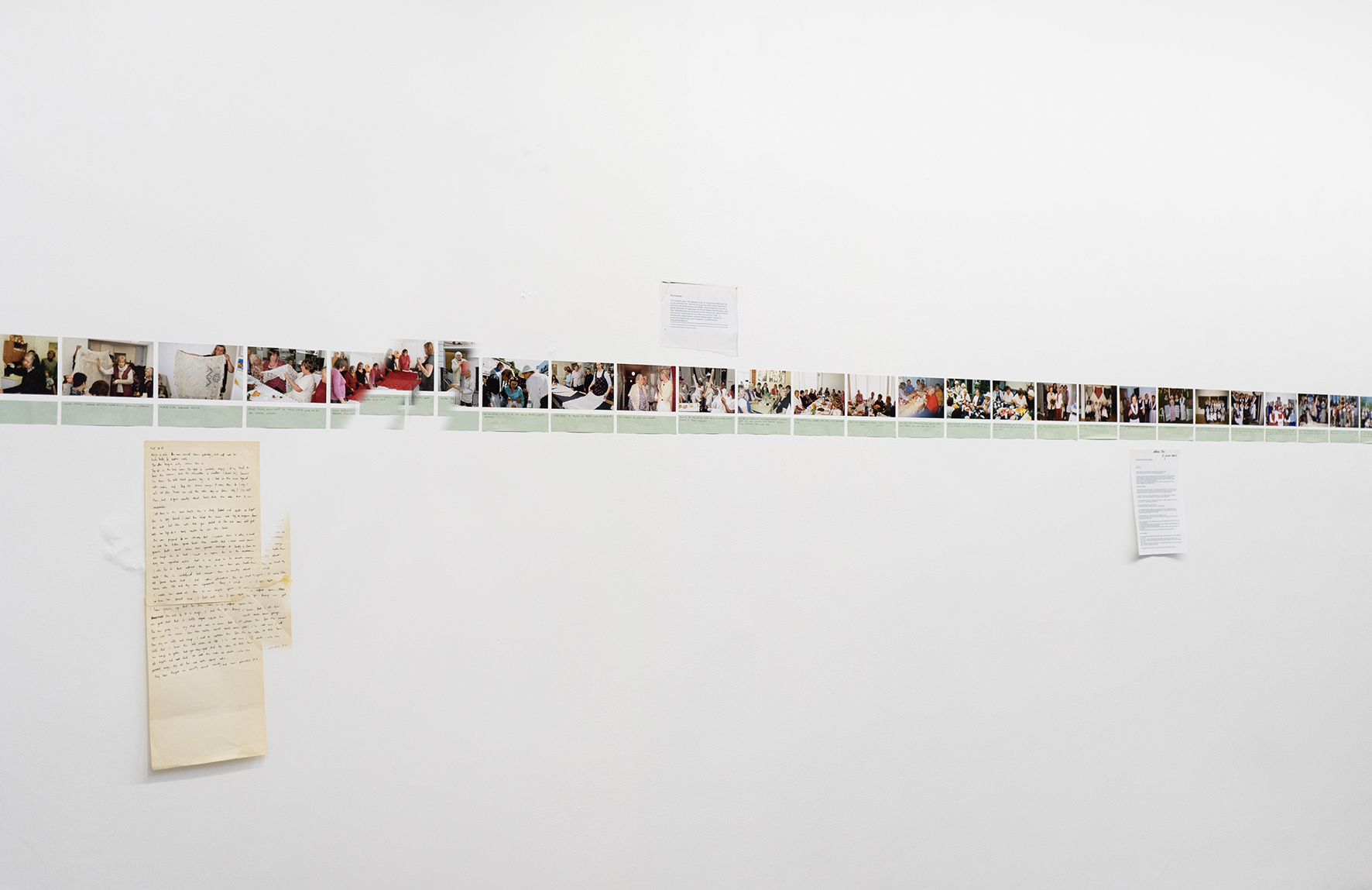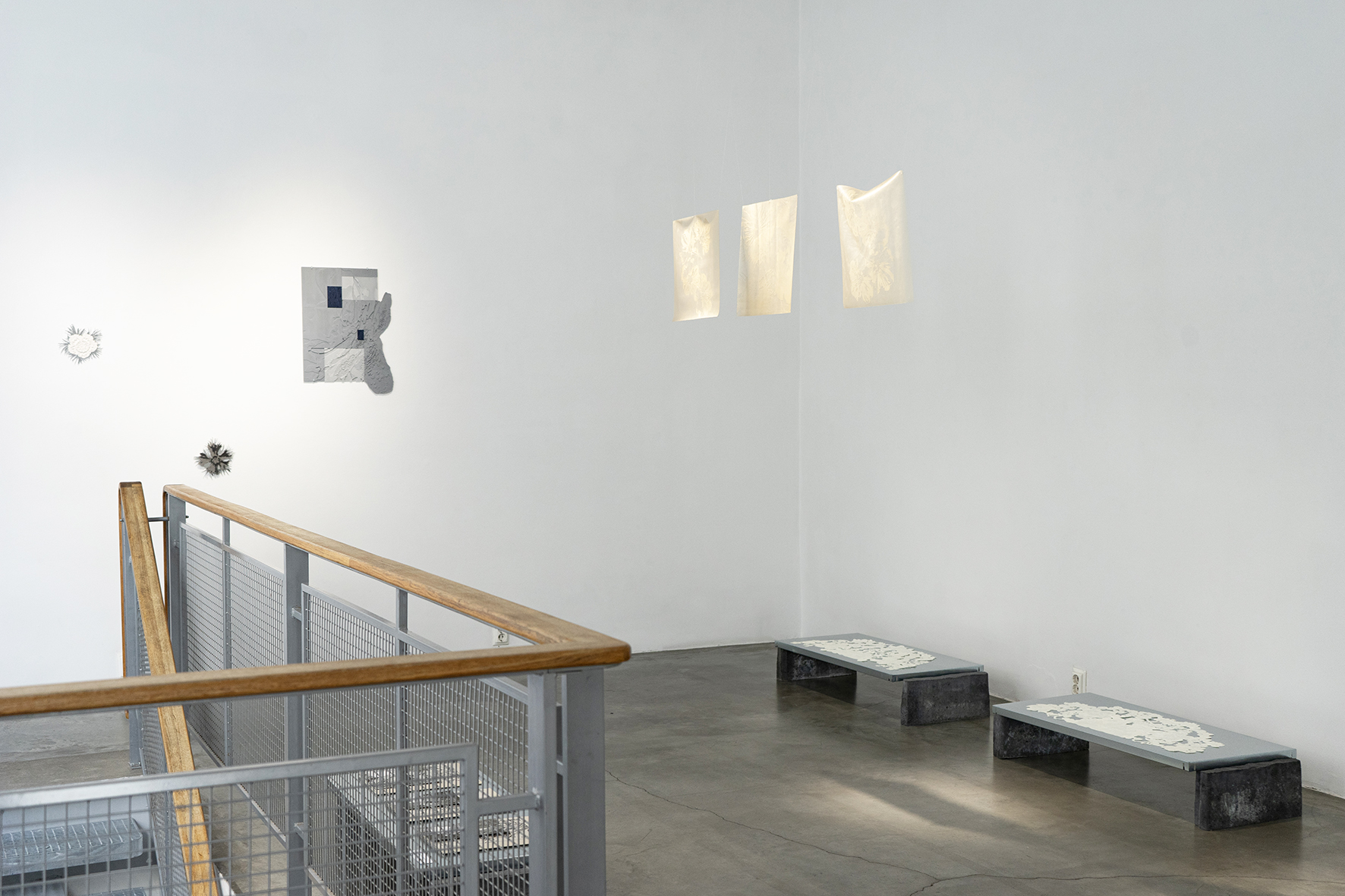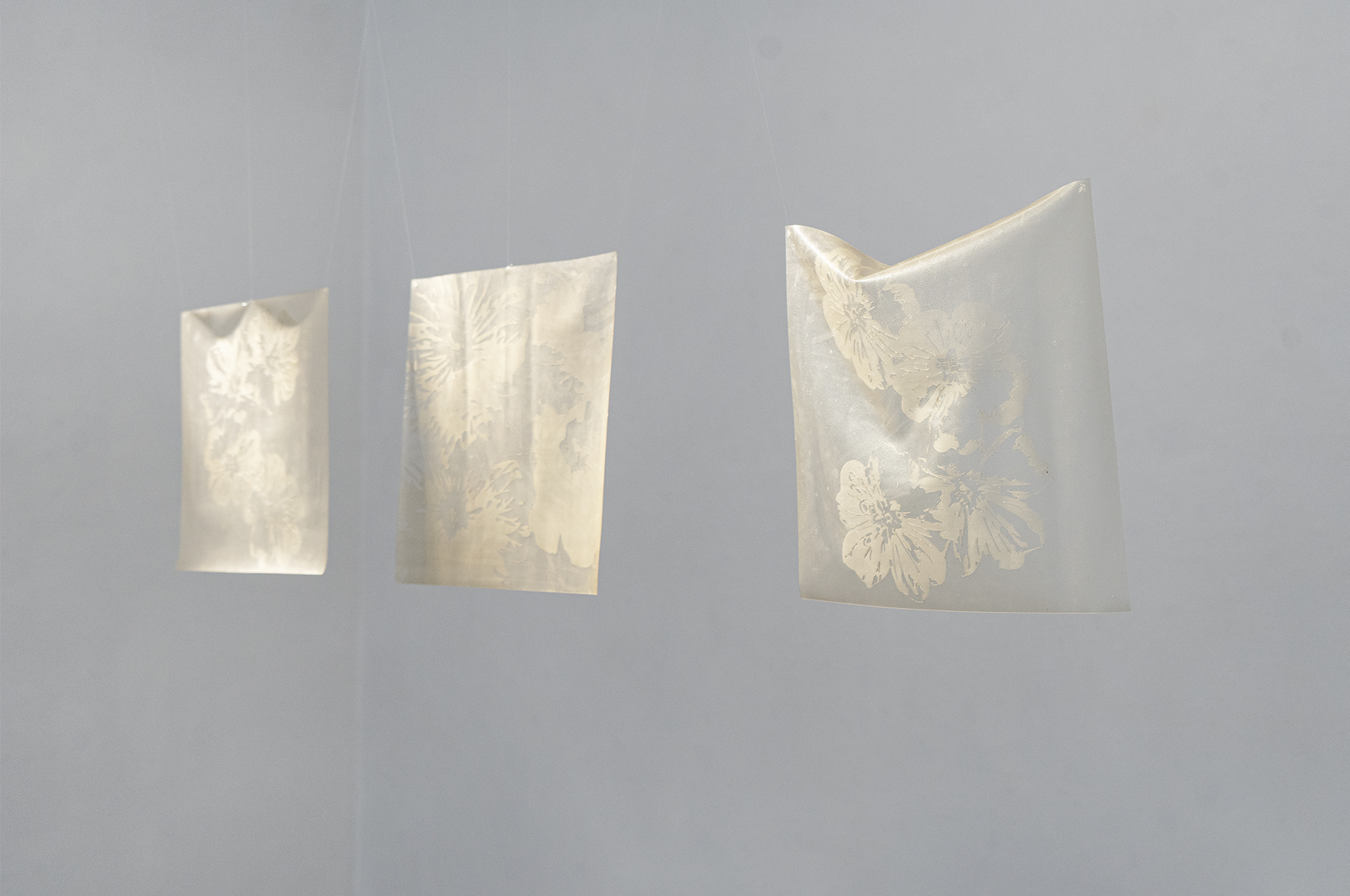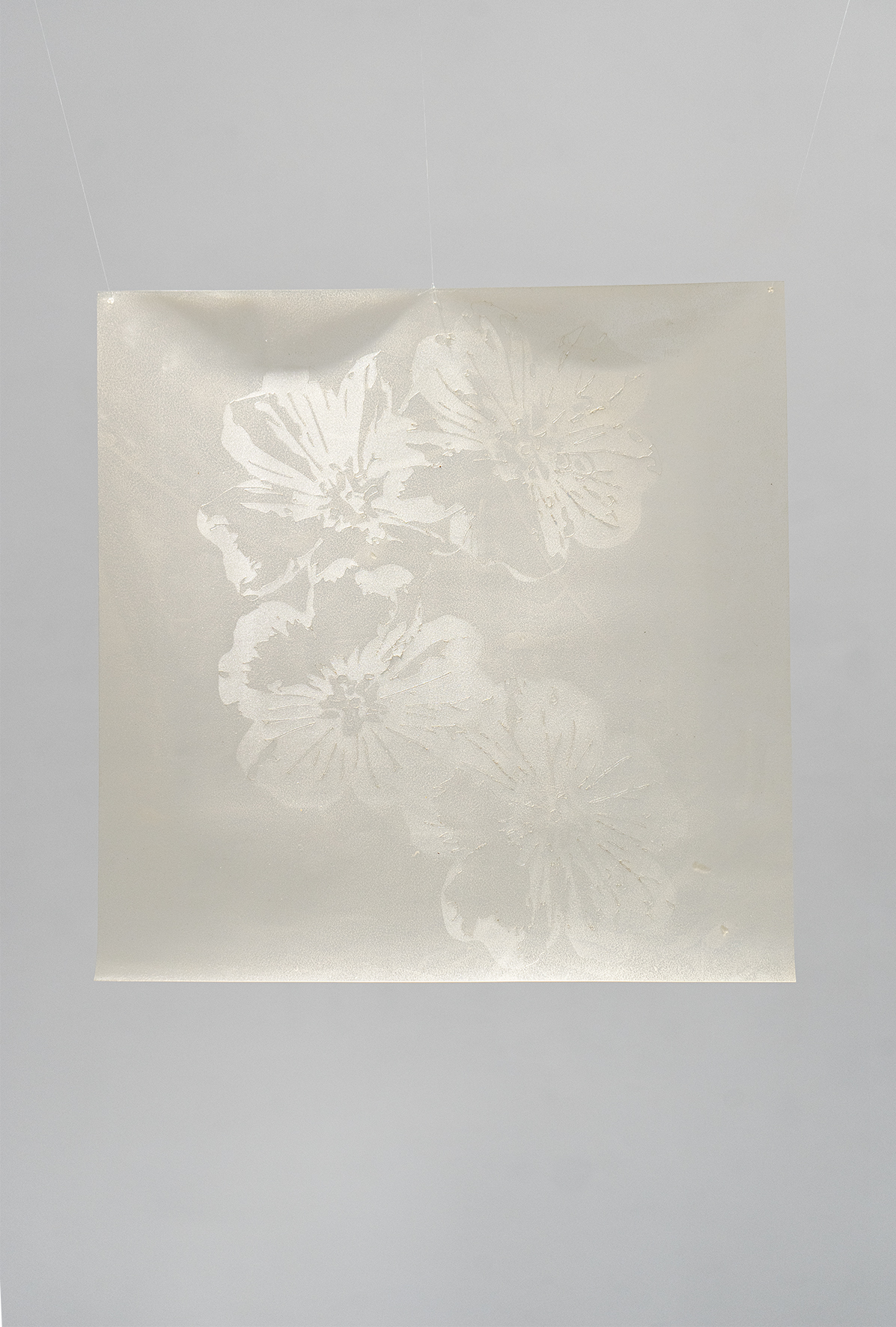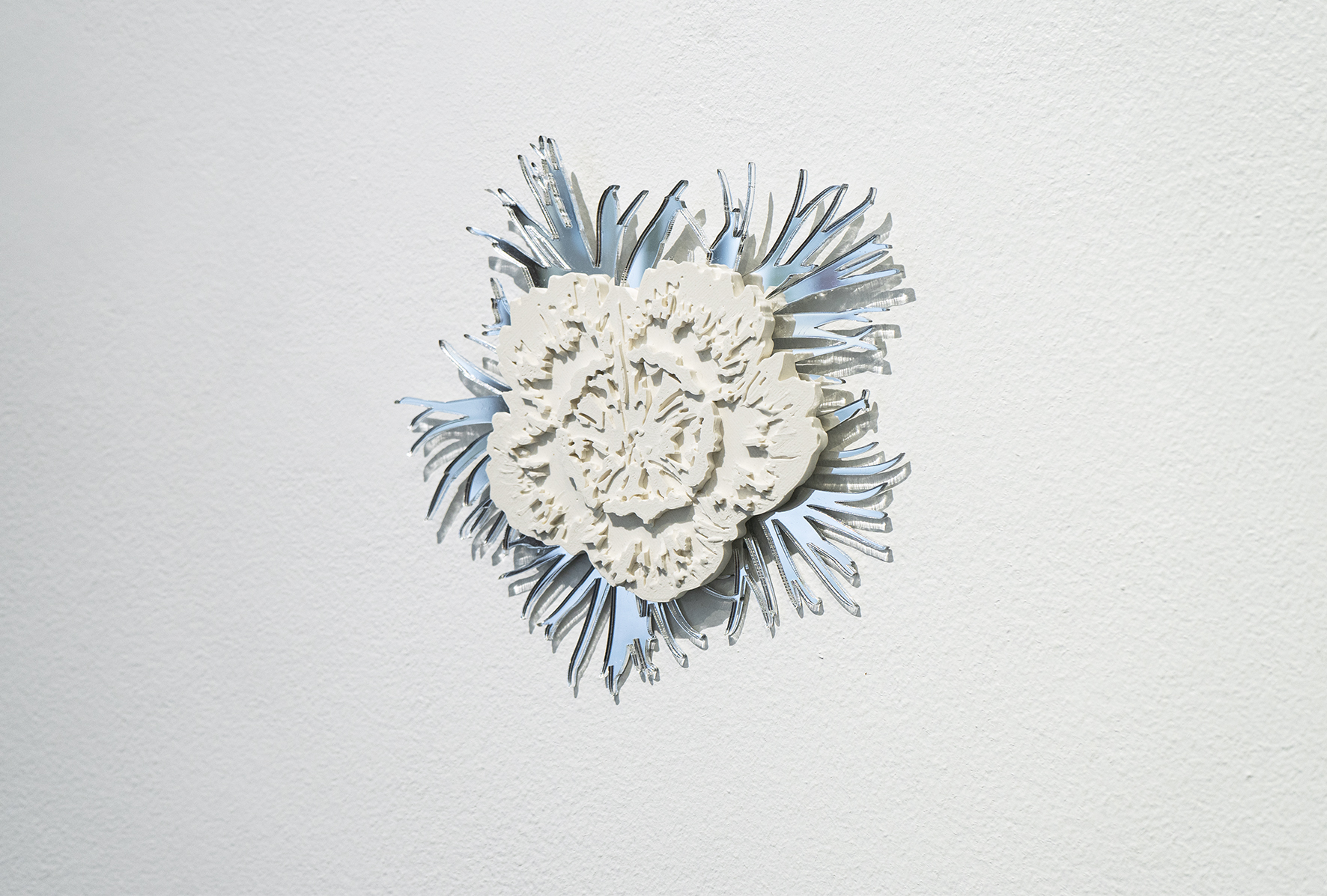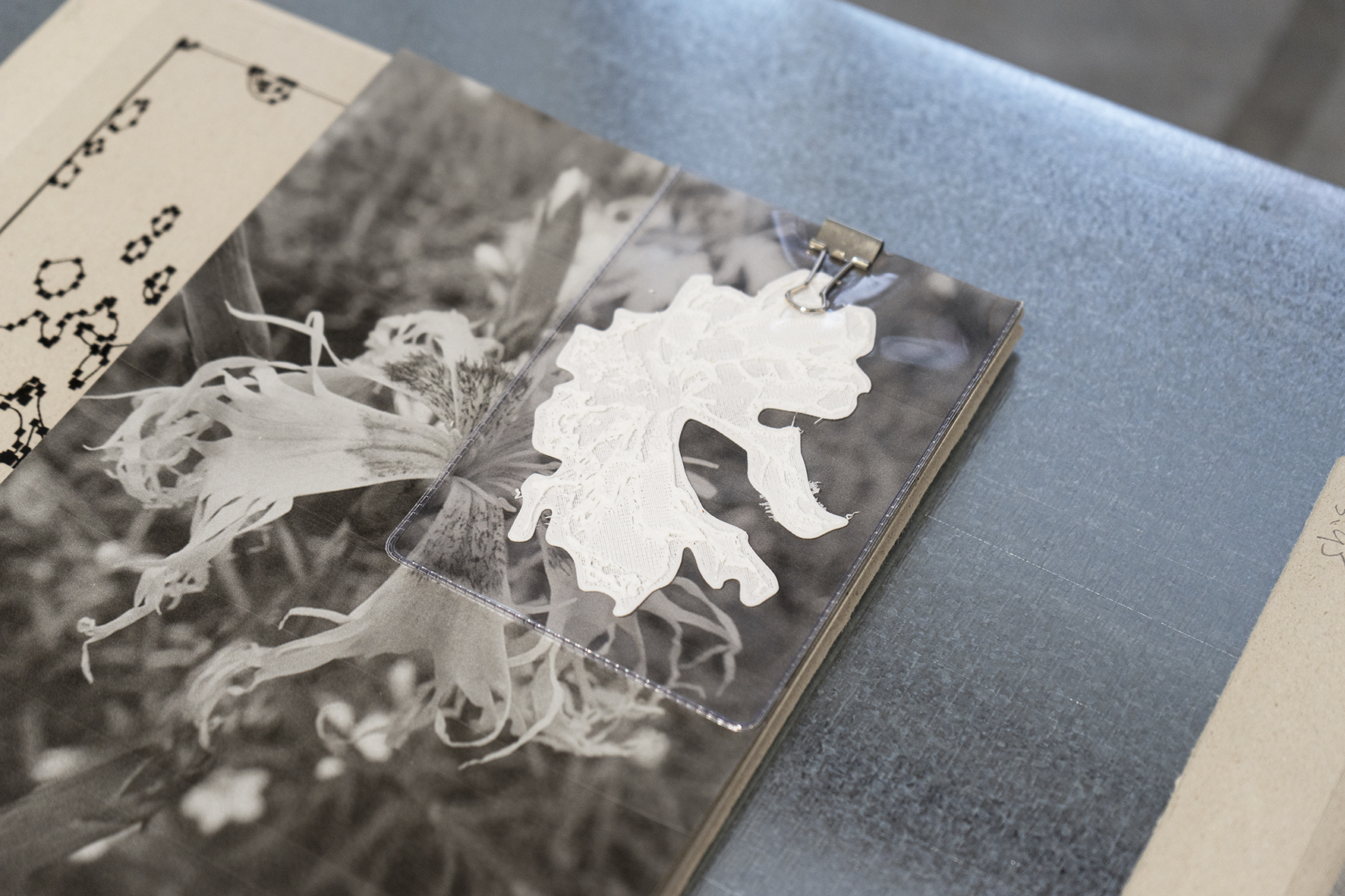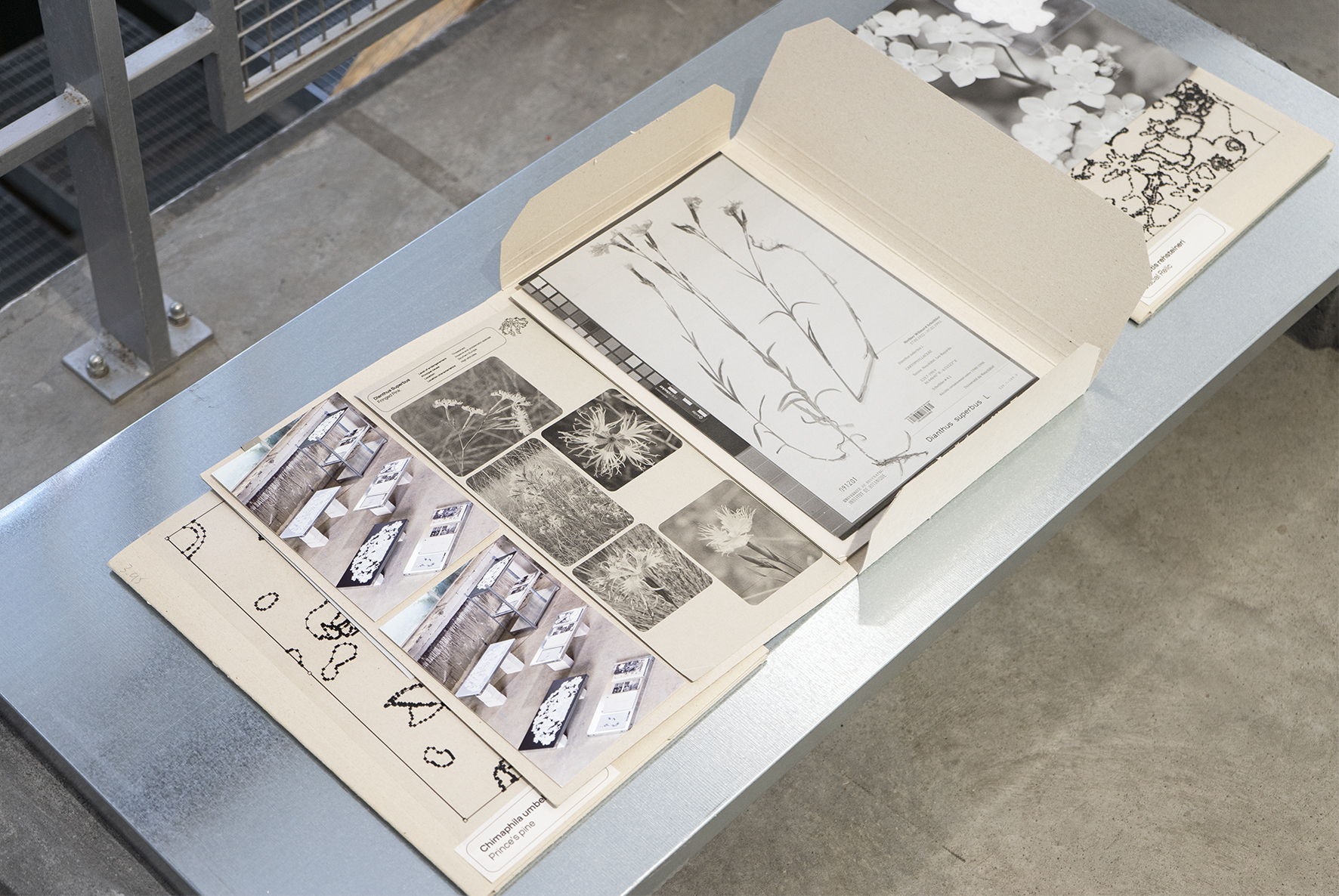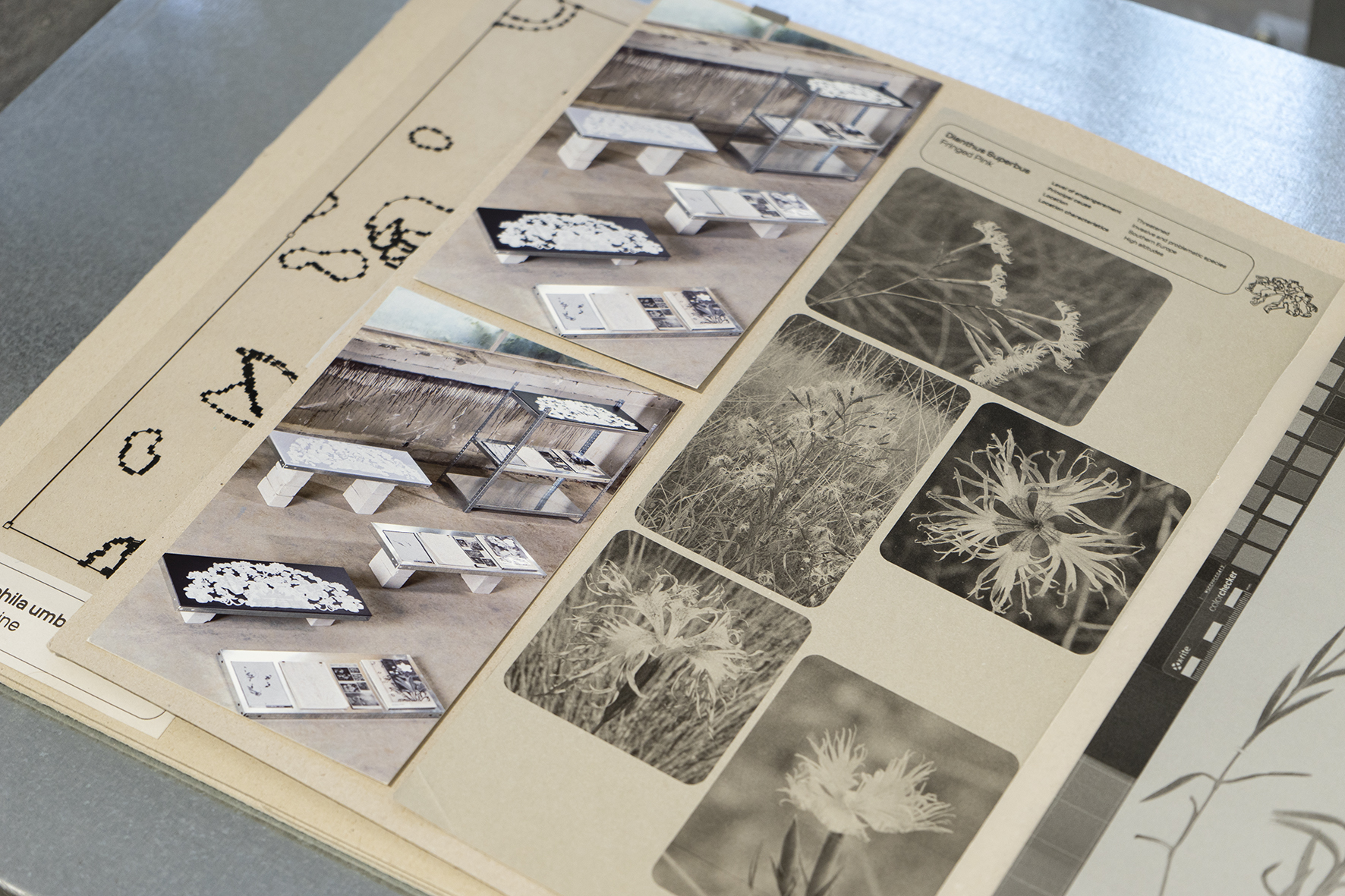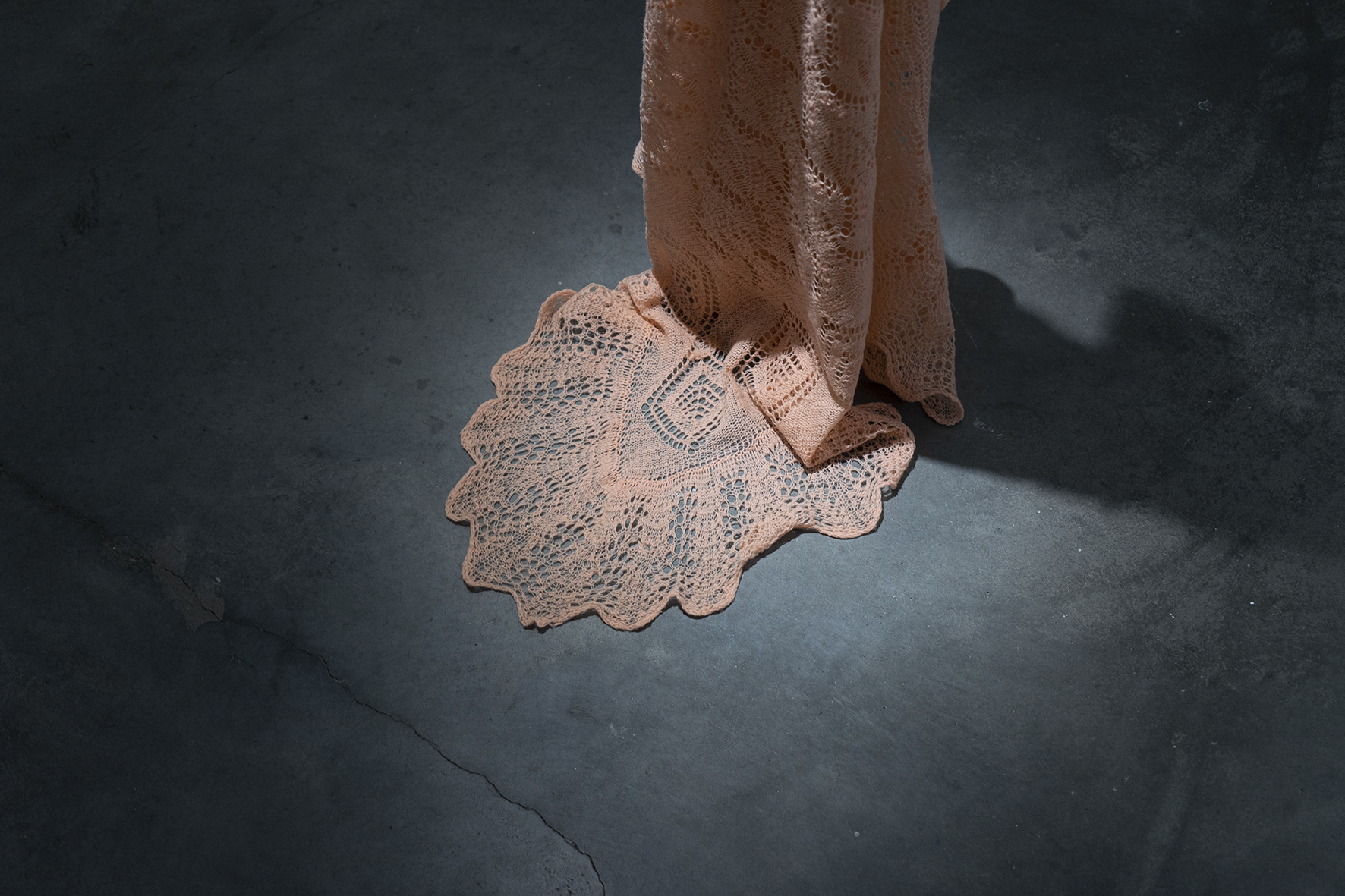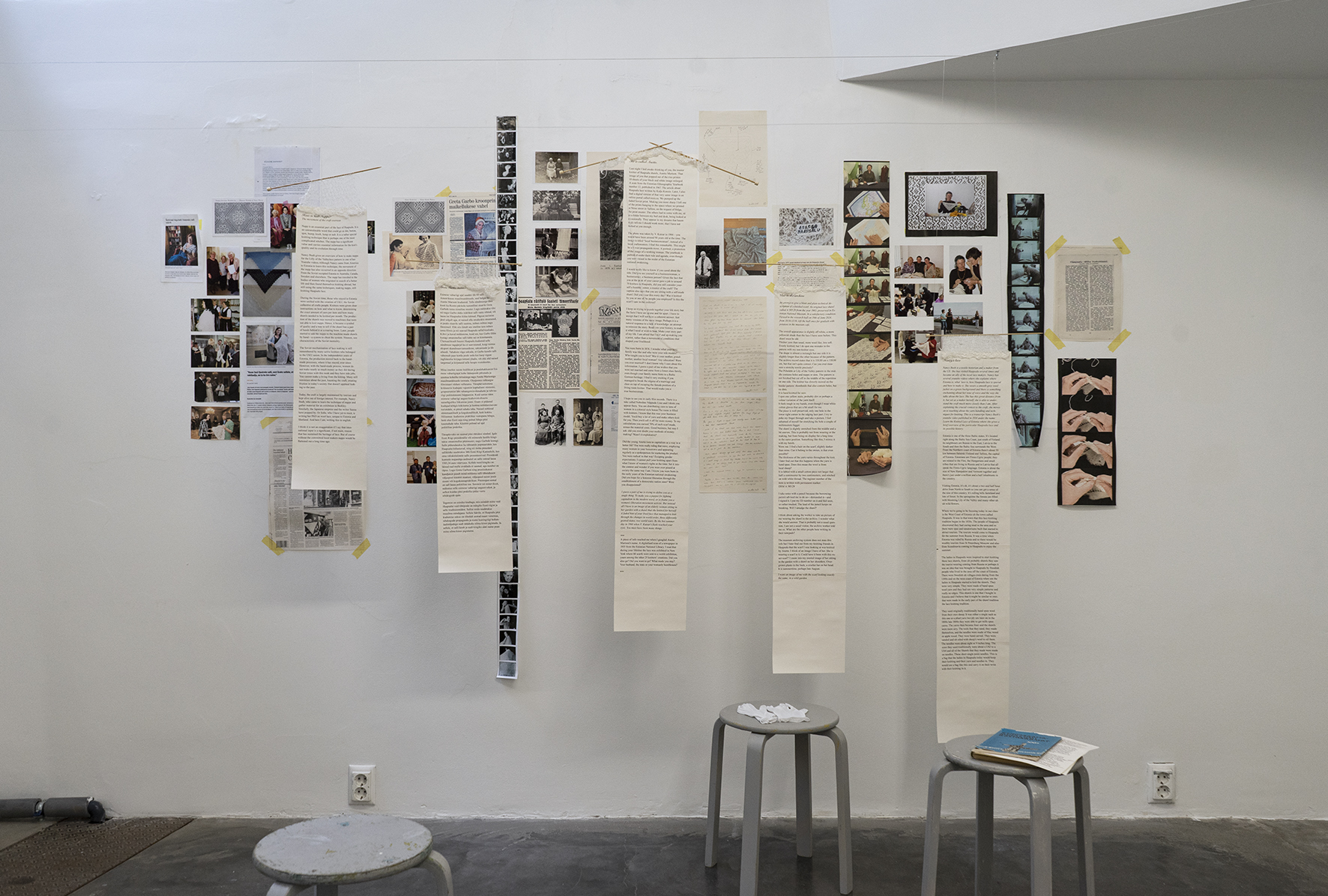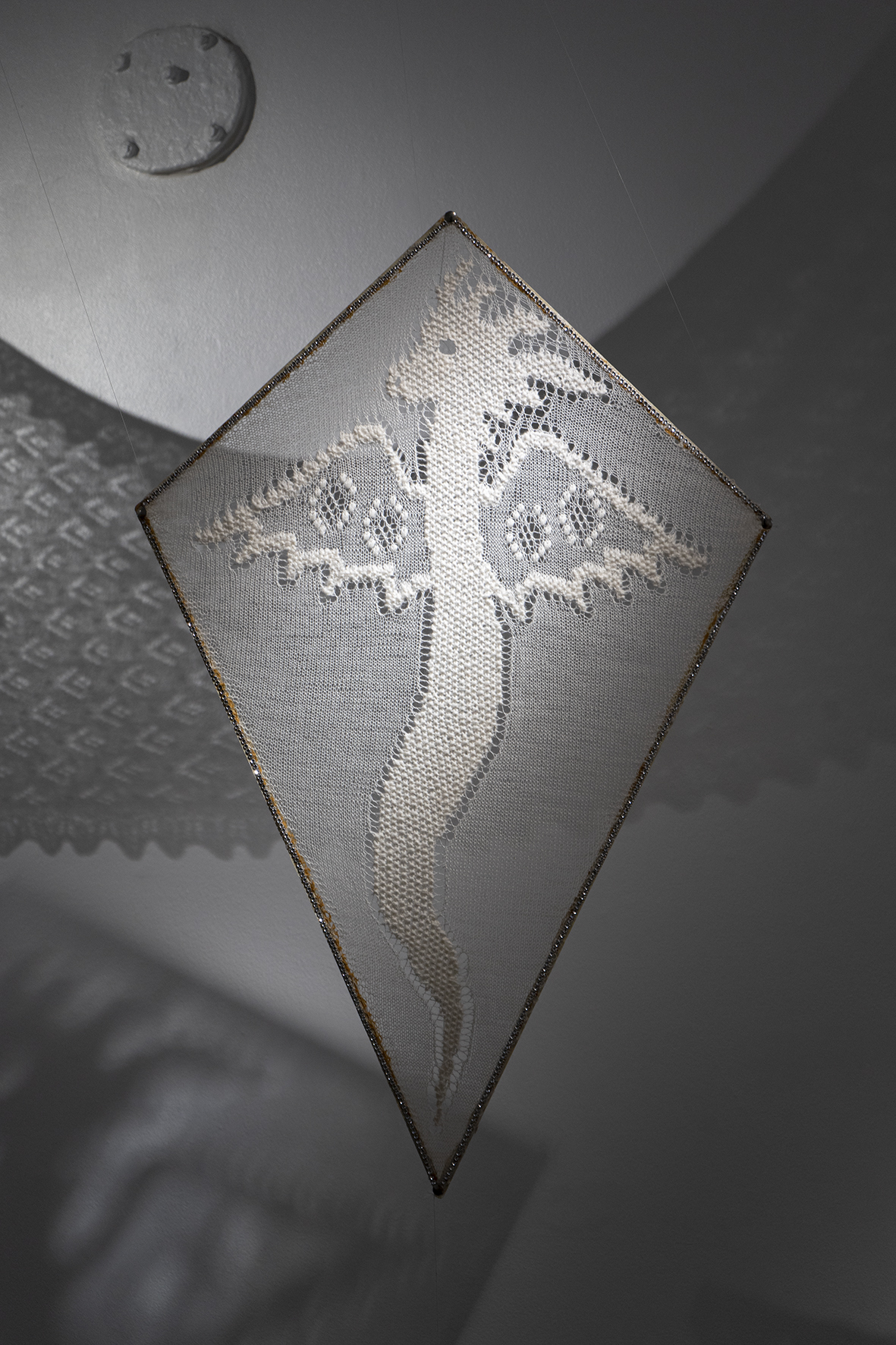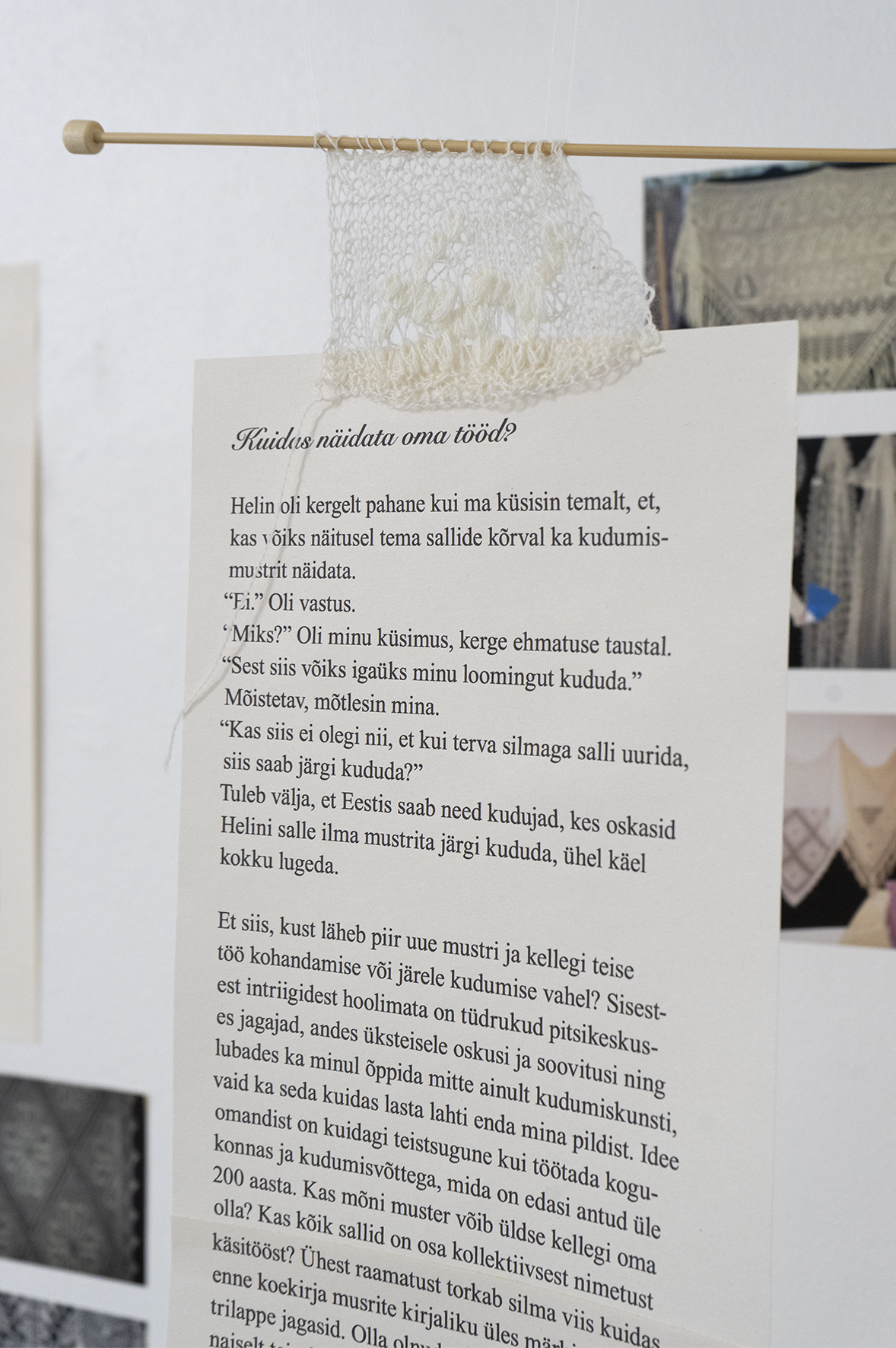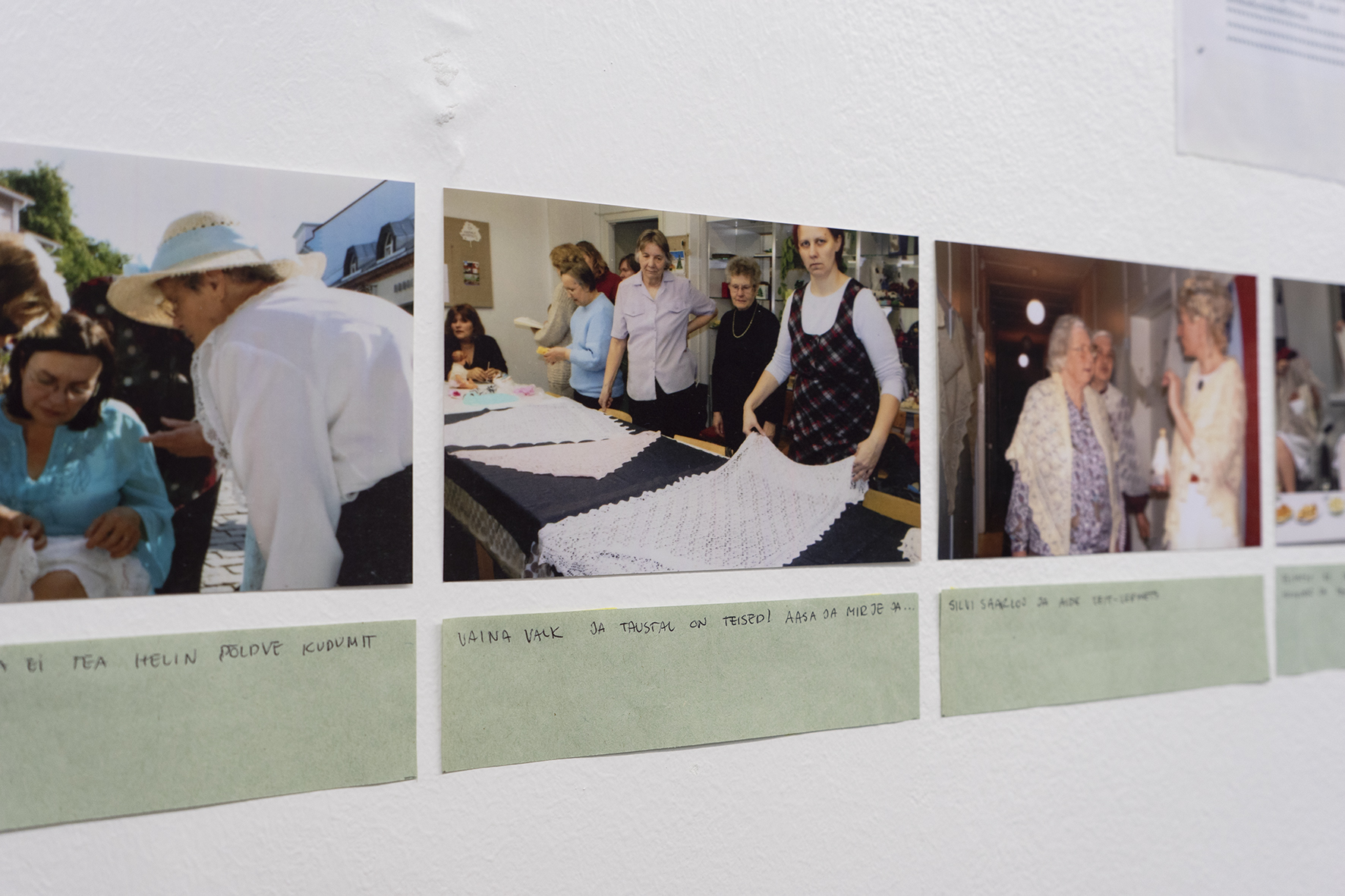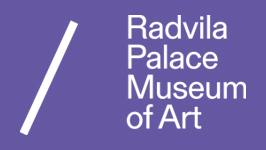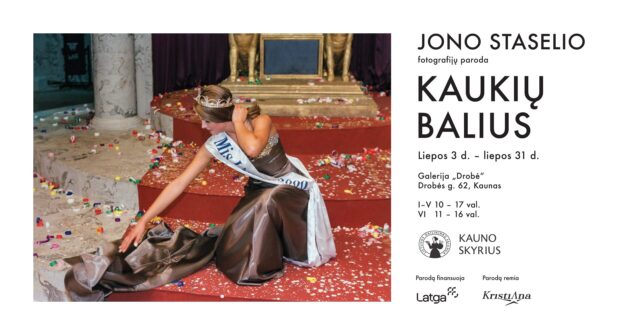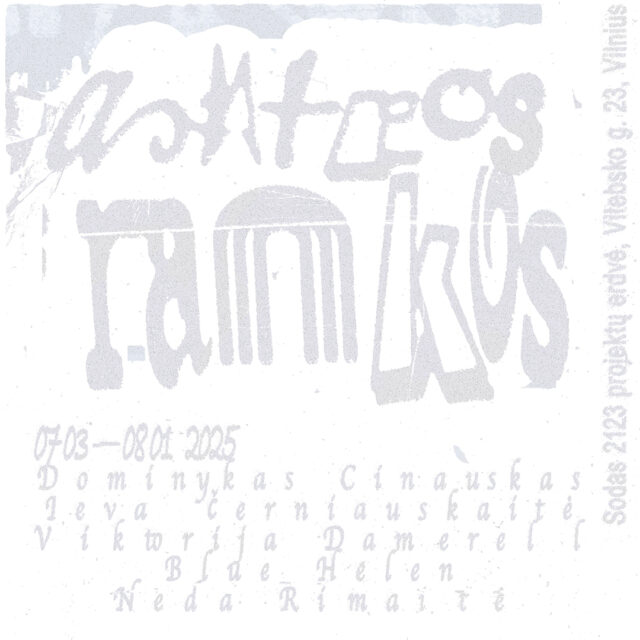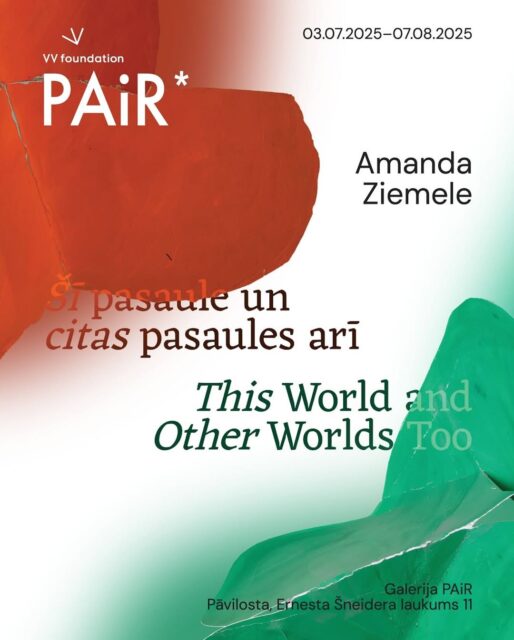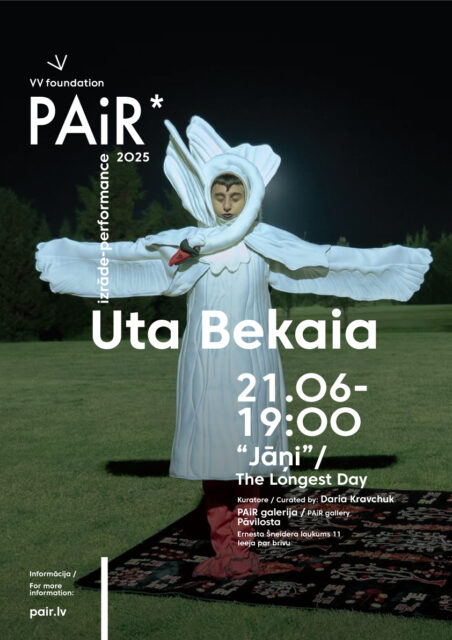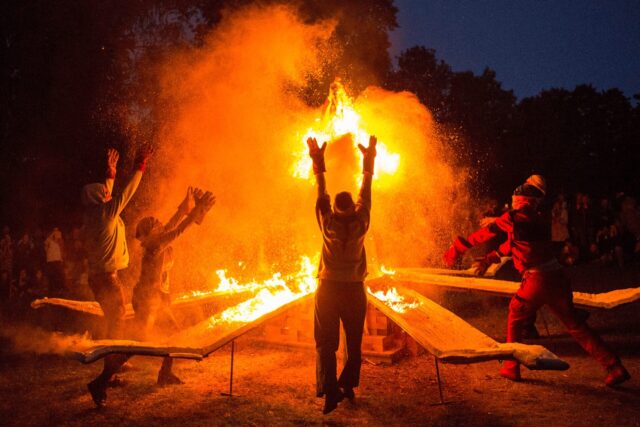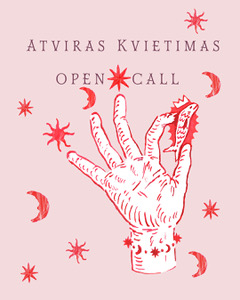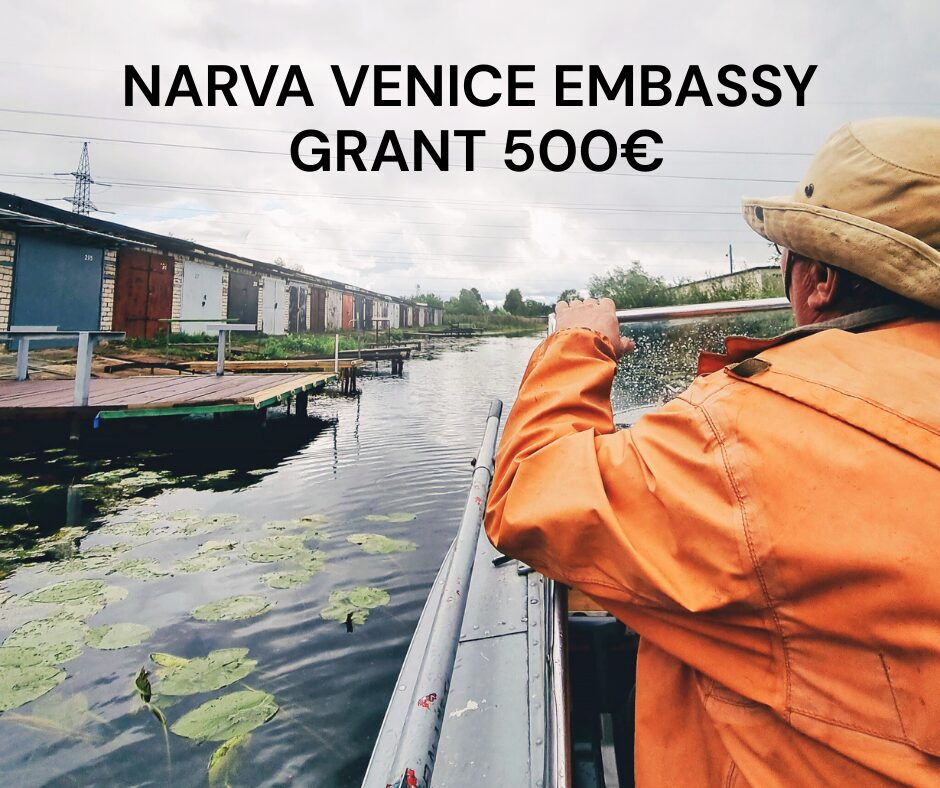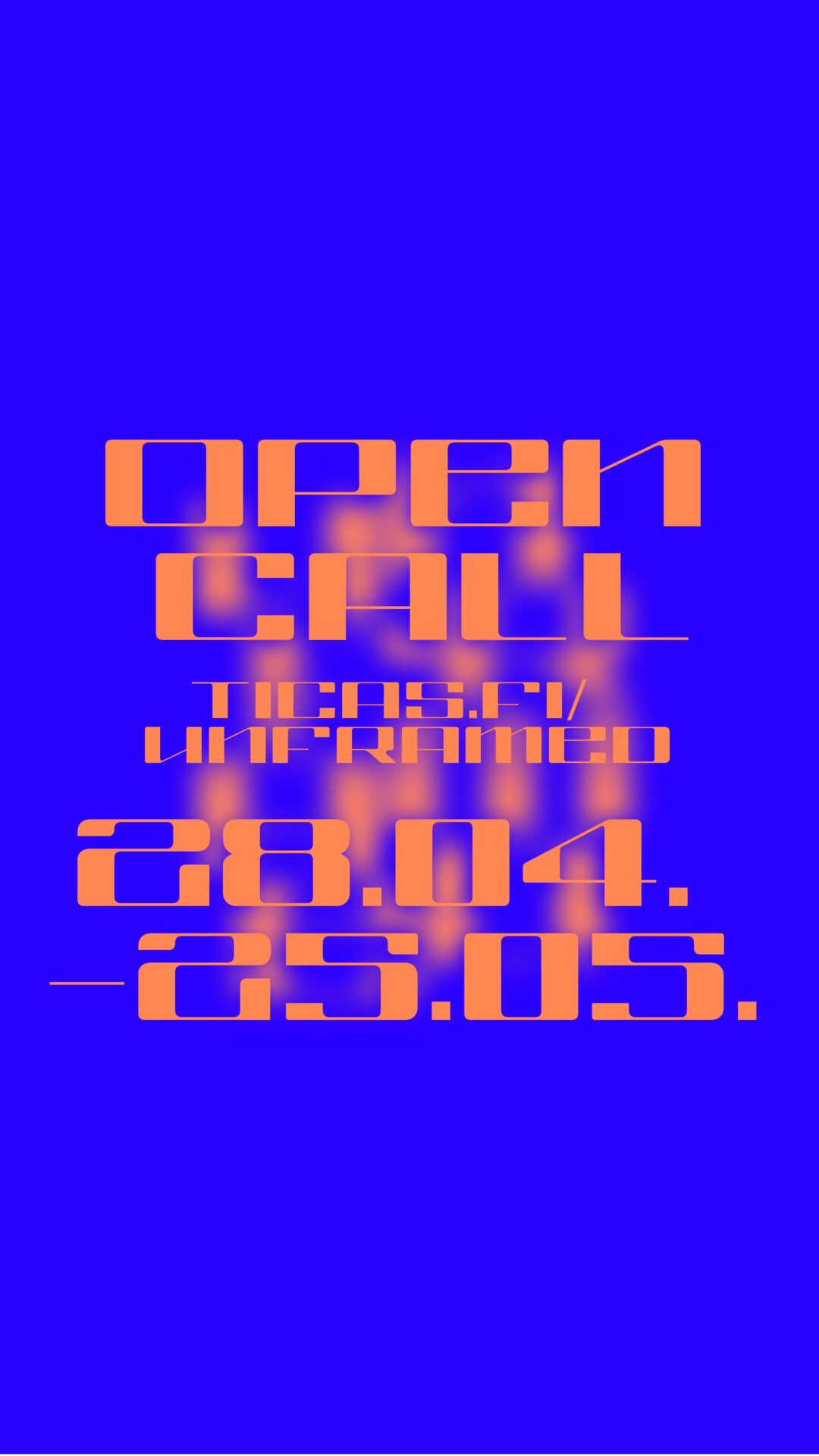The co-exhibition ‘It Never Gets Old’ by Mia Tamme & Delphine Lejeune at Hobusepea gallery, curated by Tiiu Meiner, will remain open until September 1, 2024.
‘It Never Gets Old’ brings together artist Mia Tamme and designer Delphine Lejeune to explore the intersection of gender dynamics, socio-economic realities, and aesthetics in lace crafts. By juxtaposing traditional techniques with innovative approaches, the exhibition encourages fresh perspectives on the relationship between craft, community, and contemporary life. It invites visitors to reconsider the role of lace in reflecting social change and the evolving nature of craftsmanship.
Mia Tamme investigates the legacy of Haapsalu lace through videos, narrative reconstructions, and historical elements. Her work highlights the tensions between preserving communal traditions and adapting to contemporary changes. Focusing on the historical importance of this craft, Mia addresses the challenges of maintaining traditional practices today.
By spending time with the Haapsalu knitting collective, Mia reveals that Haapsalu lace was integral to the cultural and socio-political fabric of the area. The craft built close-knit communities and gave women opportunities and purpose. The interviews and textiles she gathers reveal that lace shawls, cherished both as cultural artifacts and tourist commodities, serve as key touchstones for understanding women’s labor, rights, and creativity. Her immersion in the archives and the community exposes a significant void in historical records, a consequence of gender biases that left much of these women’s achievements undocumented. Interpreting these clues, Mia uses creative writing to fill the gaps in history and imagine less discriminatory realities.
Delphine Lejeune explores the relationship between women and machinery in the textile industry, particularly focusing on lace-making. Historically, this craft has been intertwined with women’s labor and artistry, yet since the early 20th century, it has faced challenges from rapid advancements in industrial technology and evolving gender roles.
Delphine reimagines the delicate beauty of lace using contemporary technologies such as 3D printing and laser etching. These modern techniques not only pay homage to meticulous craftsmanship but also comment on the evolving role of women in the textile industry. Her work reflects on how machinery has both empowered and constrained women’s contributions, highlighting the complex dynamics between tradition and technological progress.
Delphine’s works feature portraits of native flower species, crafted to evoke the timeless nature of portraiture as a medium of remembrance. Each floral portrait encapsulates the essence of these species through intricate patterns that mimic traditional lace designs. This approach invites viewers to reflect on the ancient connection between nature and craftsmanship.
Public Programme:
Craft is a social and skill-based activity. Reflecting this, the exhibition will be dynamic and evolving. On August 9th at 16:00, Kaidi-Kätlin Reimann will lead a Haapsalu Lace knitting workshop for all skill levels. At 18:00, Mia Tamme will give a lecture on the lace narratives lost in time and conversation. These events underscore that craft is a living, changing practice, emphasizing its ever-evolving nature.
To take part of the knitting workshop please register by writing us at galerii@eaa.ee.
There is place for 12 participants.
Delphine Lejeune (BE) is a visual designer and material researcher working experimentally across 2D and 3D printed surfaces. Her curiosities lie within designed objects, and how they critically shape our social behaviours. Her source material is often found, digital images that she extrapolates into objects through layers of reformatting, delineating the boundaries between digital and physical representations.
Mia Tamme (EST) is a visual researcher & an experimental film-maker hoovering in Tallinn, Estonia. She dances with ethnographic research, social design and autofiction to connect with marginal communities. She digs into the knowledge of heritage passed down on the glorious grounds of Estonia, and scans how folk objects and tales continue to shape individual and social identities.
Exhibitions in Hobusepea gallery are supported by the Cultural Endowment of Estonia, the Estonian Ministry of Culture and Liviko AS.
Photography: Anna Mari Liivrand
